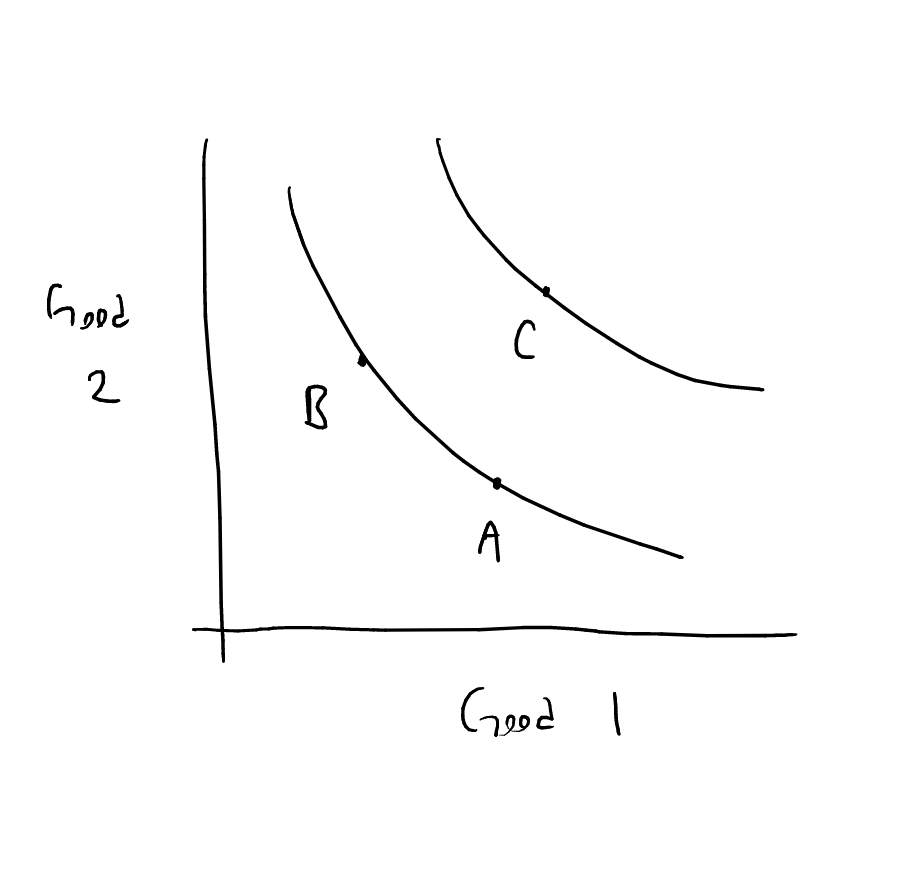This is an old revision of the document!
Utility
Utility is an ordinal concept that allows a consumer to rank choices.
Consumers behave to maximize their utility. They have preferences, which is what they want, and they get as much as possible within a certain budget.
Preference assumptions
We make three assumptions about the preferences of consumers:
- Completeness: Consumers do have an opinion on all possible choices.
- Transitivity: $ A > B, B > C \implies A > C $
- Non-satiation: More is always better.
- Marginal utility is always positive.
Indifference curves
A plot of indifference curves is a graphical map of preferences. The two axes on such a plot are two different goods, and a consumer is indifferent between any of the combinations of goods on an indifference curve.
Properties of indifference curves
- Consumers prefer higher indifference curves.
- Indifference curves must slope downwards due to non-satiation.
- Indifference curves may not cross due to transitivity.
- There is only one indifference curve through every possible combination of goods.
Utility functions
A utility function is a mathematical representation of the preferences of a consumer.
Consider the following utility function for an individual consuming good X and good Y:
$$ U = \sqrt{XY} $$
Marginal utility is the derivative of utility with respect to the quantity of a good. Marginal utility generally diminishes as the number of goods consumed increases. The marginal utility for good X in the example is:
$$ \frac{\partial U}{\partial X} = \frac{1}{2}\sqrt{\frac{Y}{X}} $$
We can see that this quantity decreases for increasing values of $X$.
